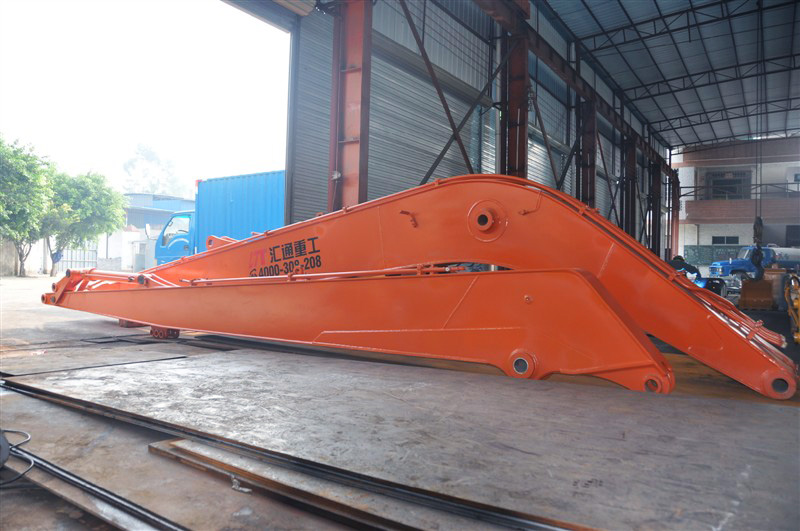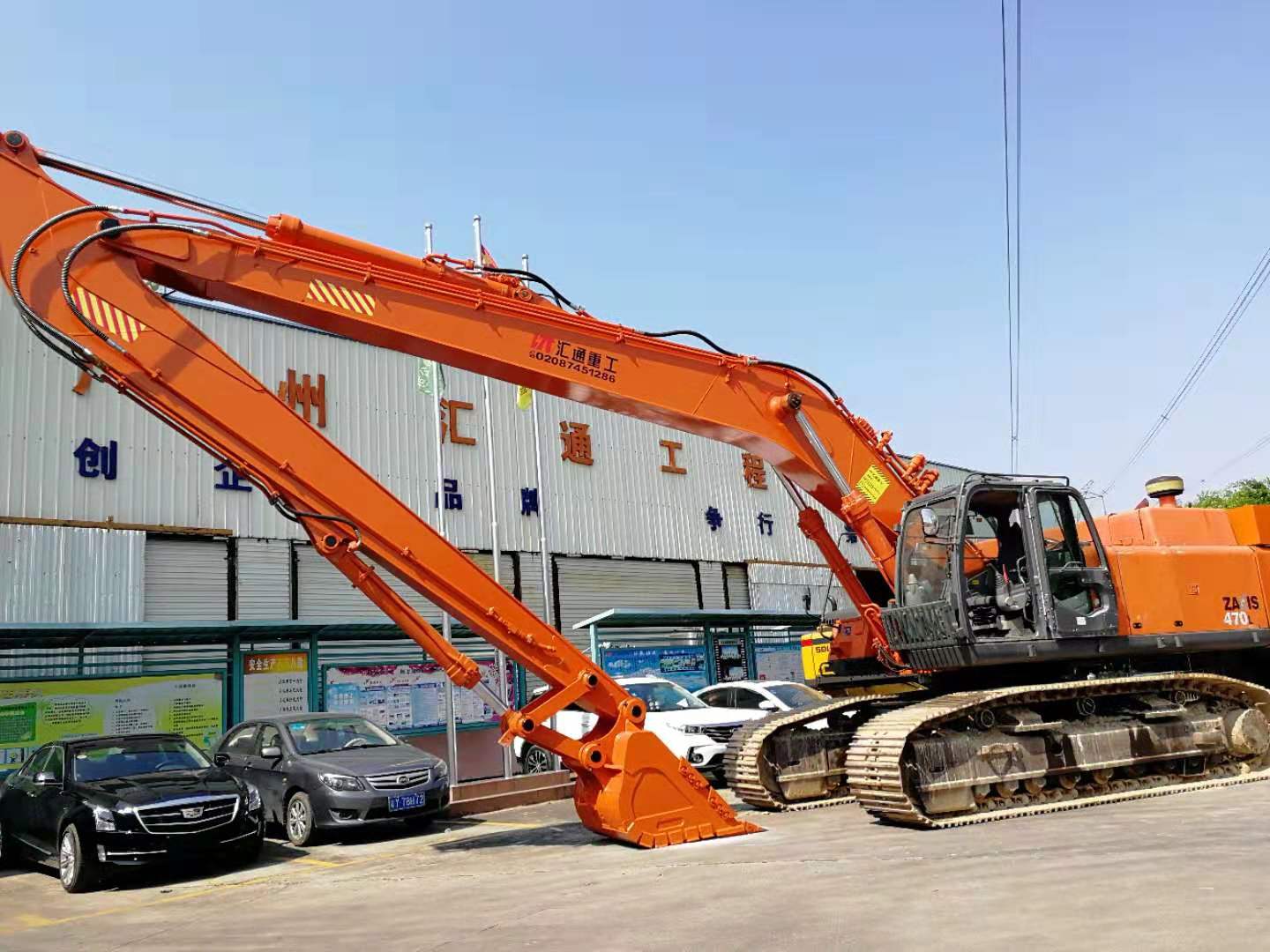 HuiTong
HuiTong  2025-06-13
2025-06-13
The cracking of the long reach boom of the excavator is a problem that many people encounter, because as the main working part of the excavator, basically every action has to be stressed. Although modern steel smelting technology has been very developed, it has not been used in various strengths. Under the action of time, it can still guarantee that the steel will not deform, tear or wear. So what exactly caused the cracking? How can we fix it?

There are many reasons for the cracking of the long reach boom of the excavator
1. Use a bucket that exceeds the original bucket capacity. For example, if a 10 ton excavator uses a 20 ton bucket or more, it will cause the large and small arms to work abnormally and crack. Therefore, each model should use a bucket with the original capacity.
2. The driver's operation method is wrong. Excessive force when digging hard heavy objects, hard digging, using the excavator as a crane, lifting heavy objects, etc. are all causes of cracks in the long and large arms of the excavator.
3. Excessive work load for a long period of time can cause fatigue damage, especially when working in mines. Cracking of the extended arms and large arms of excavators is more common. Do not overwork for a long time.
The work load of the mine is so large that it is possible to cause the excavator to break the arm
So what should I do if the long reach boom of the excavator are cracked
1. The welding place must be cleaned up before welding;
2. A certain preheating must be carried out before welding;
3. Appropriate welding materials must be selected when welding;
4. The penetration must be guaranteed during welding;

It must be cleaned before welding, that is, the original cracked weld meat is removed, and it is ground with an interphase grinder or a carbon arc gouging if possible, but the iron oxide must be polished after planing. If possible, preheat 100 degrees at the welding position. Then use the 3.2J507 welding rod for welding, and the welding will stop after a while, hit the weld and the edge of the weld with a hammer, and keep hitting with a hammer until the weld is basically cooled. The purpose is to relieve welding stress, because it is impossible to do heat treatment after welding. When welding, the penetration must be ensured. If the gap of the weld position is large, a back plate can be added inside.
The electrode type is very important. If you want to understand the material, you have to take some iron foam tests, and the test will come out, and then you can assign the welding rod according to the composition.
In general, because each excavator breaks differently, let’s briefly illustrate
The broken part is a little in front of the ear seat of the boom cylinder. It is not recommended to continue working to prevent continued tearing and safety accidents.
Step 1. Cut off the side plates 180mm to 200mm from the left and right sides of the fracture, and cut the lower cover plate by about 150mm based on the width of the side plate.
Step 2. lay the liner under the broken cover plate, weld it, and weld the cracks of the cover plate. The welding process should be smooth and without bubbles.
Step 3. after welding, according to the blue part of the side plate cut in step one, re-cut an iron plate according to the size and weld it on, and put a liner on the inside. The liner should be longer than the sealed side panel.
Step 4. After finishing the previous step, the bottom cover is not sealed. Before the bottom cover is sealed, the liner is still applied. Why? Why do you always hit the liner? Lining is simple, rough and effective. After finishing the liner and sealing the bottom plate, the repair work is basically completed. Then you can sand, putty on the paint.